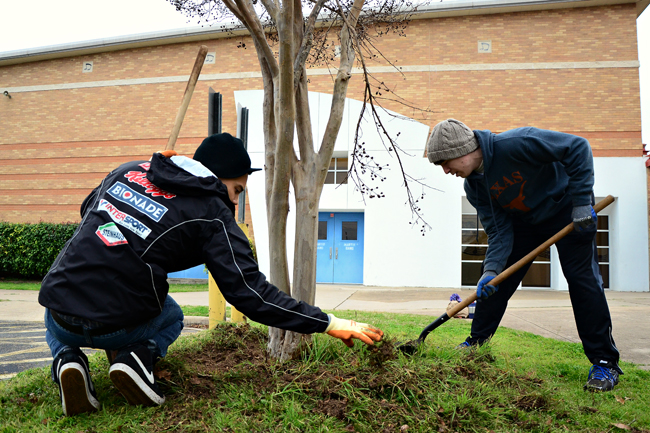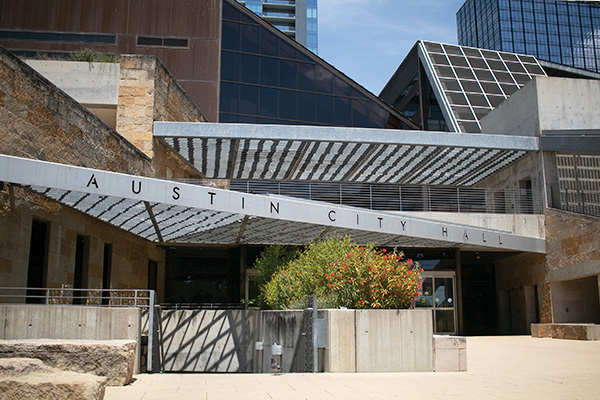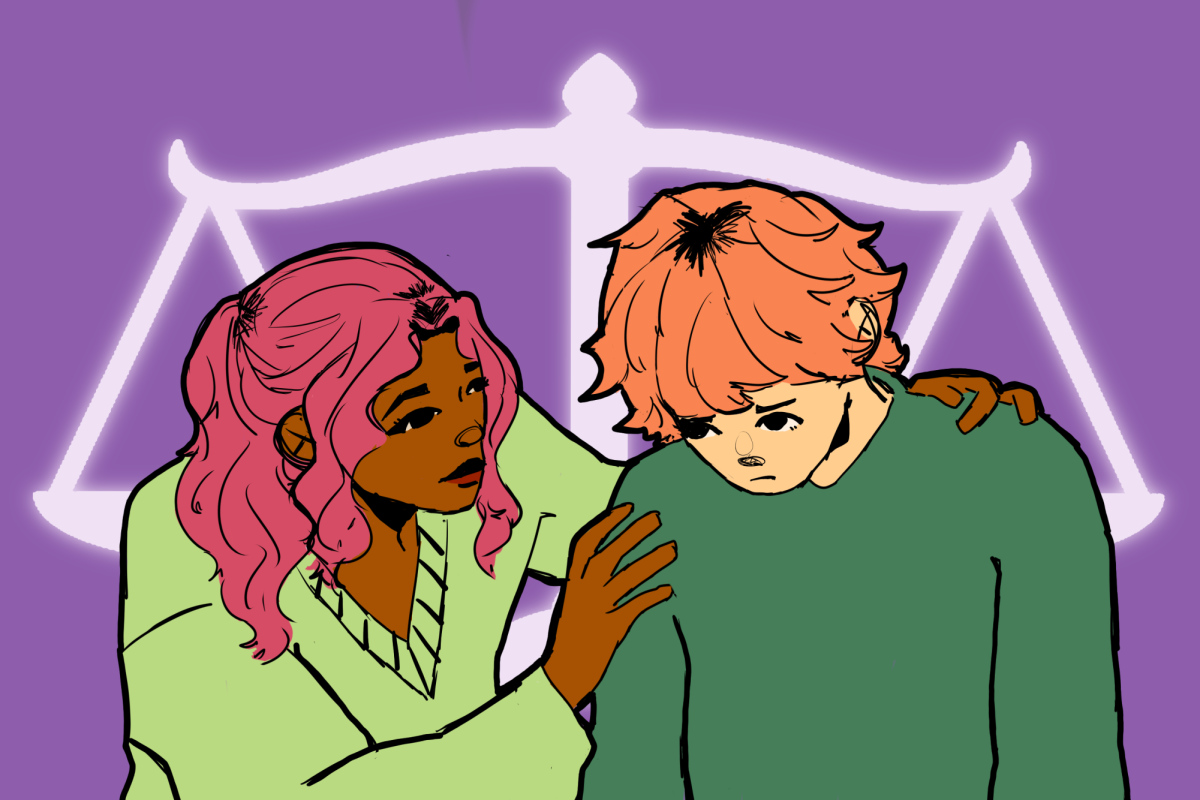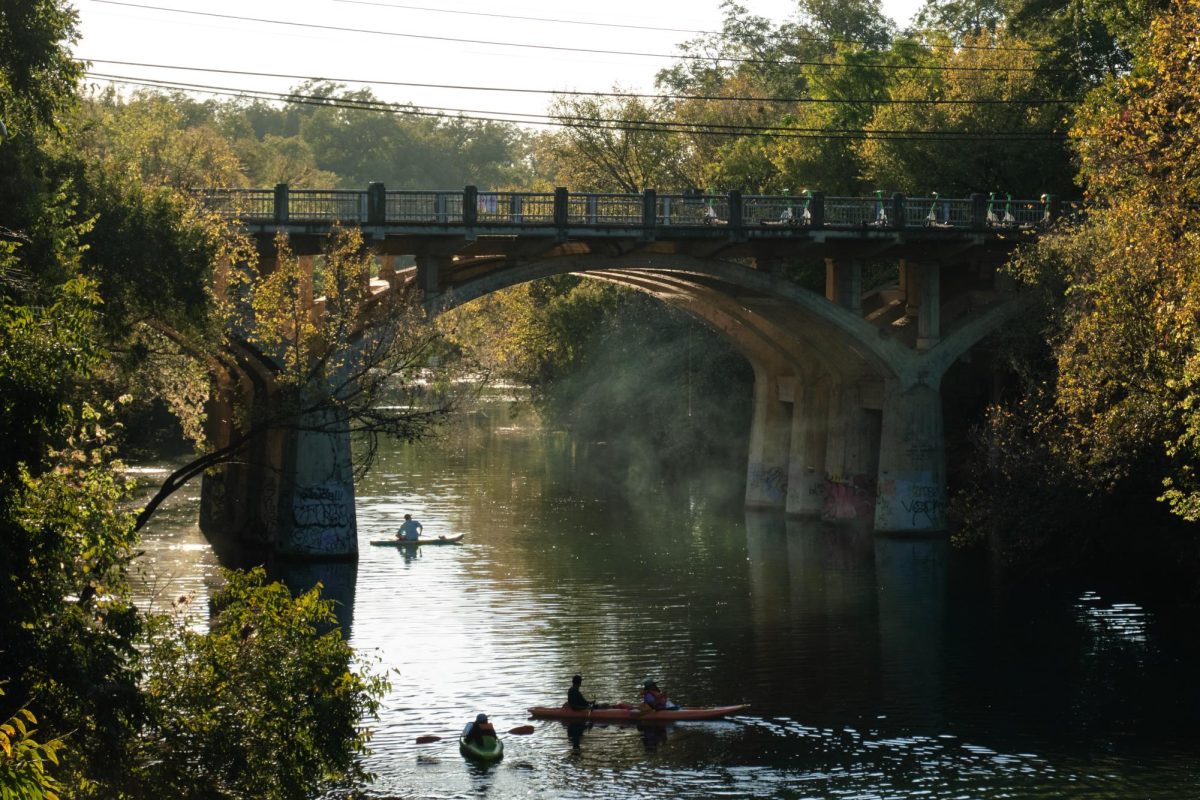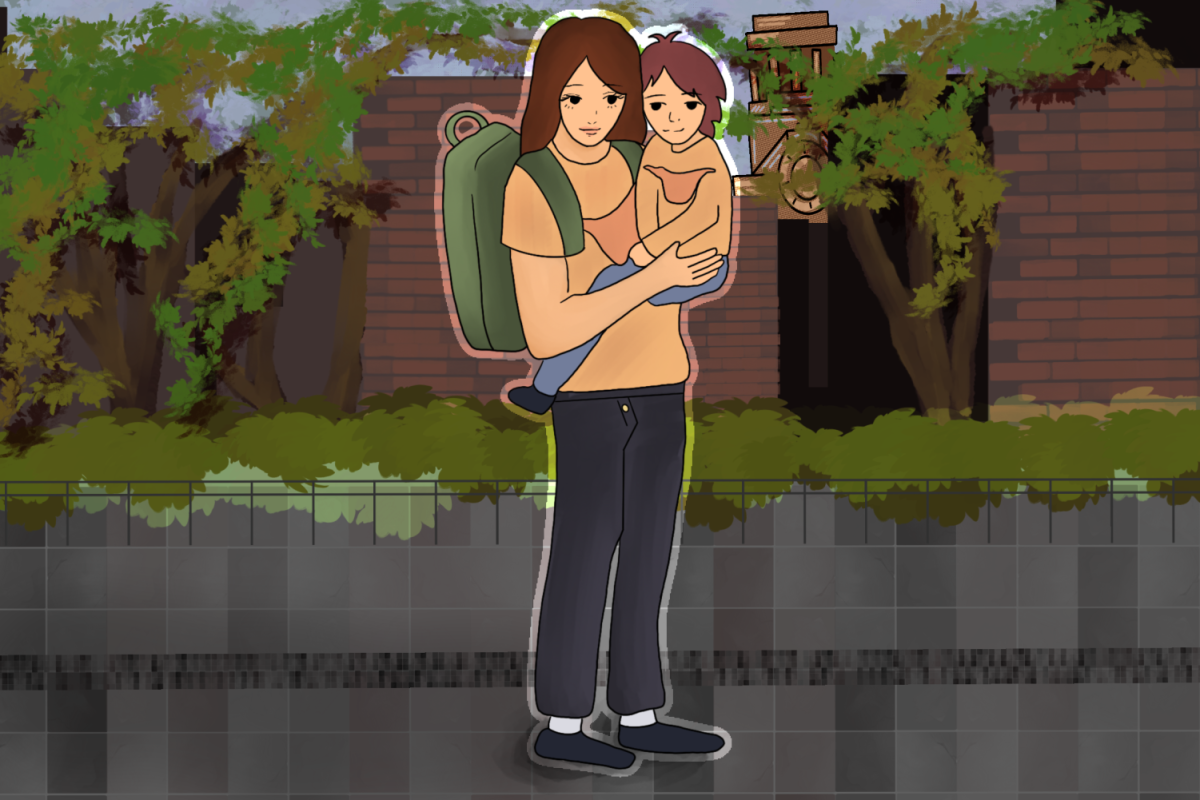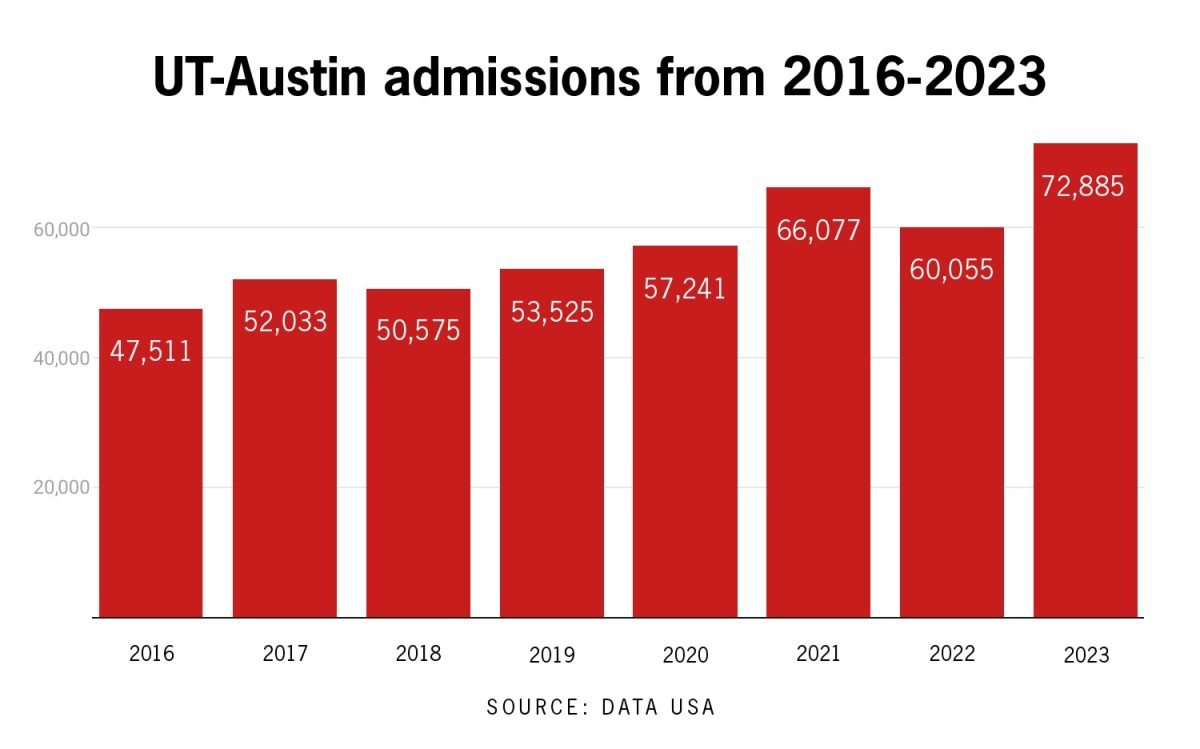Despite dealing with multiple delays and cancellations because of inclement weather, more than 800 UT student volunteers met and performed service work for Austin’s Holly and East Cesar Chavez neighborhoods Saturday.
The Project, a program the Longhorn Center for Community Engagement runs, organized UT’s “largest day of service.” Students raked leaves, picked up trash and built flower beds after a two-hour delay. The volunteers were unable to carry out or complete many of the planned service projects, such as painting houses, because of the delay.
Math senior Javier Polo said about 2,000 student volunteers registered for The Project, but only 860 volunteers attended because the organization cancelled the afternoon shift, and shuttle buses were unable to transport students to the volunteer site.
“Since we weren’t able to bring hundreds of students from UT here to the neighborhood, we decided to focus all the resources to not all the sites, but to specific sites that had the most work that needed to be done and needed the most manpower,” Polo said.
Lori Renteria, a committee chair in the East Cesar Chavez Planning Team, said volunteers worked on repairing 25 homes for veterans and people with disabilities. Renteria said the students will have to return to complete the repairs and paint the homes as well.
Joe Washington, Austin Parks and Recreation community liaison, said the Austin community depends on the work of volunteer-based service organizations, such as The Project.
“Just the city staff and the tax dollars alone — that’s not enough to address all the needs we have in the community. We depend — the city and the community — on volunteer groups,” Washington said.
Public health senior Alyssa Koeter, a member of UT service fraternity Texas Alpha Phi Omega, said she has seen the impact The Project has made in the East Austin community.
“I’ve done this project at least three year in a row, and every time I come back, it seems like there’s always work to do, but every time I come back, I can see the difference we made the previous years,” Koeter said. “As long as we keep doing this every year, we’ll impact little parts of the community, and overall, within the next 10–20 years, we’ll see a big impact throughout the entire community.”

